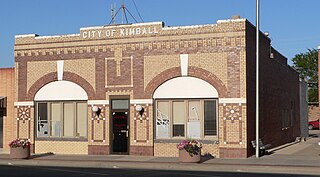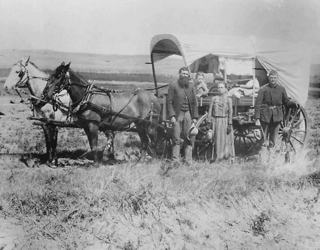
The Philadelphia History Museum at the Atwater Kent at 15 South 7th Street between Market and Ranstead Streets in Center City, Philadelphia was founded in 1938 to be Philadelphia's city history museum. The museum occupies architect John Haviland's landmark Greek Revival structure built in 1824–26 for the Franklin Institute. The Museum operates as a city agency as part of Philadelphia's Department of Recreation.
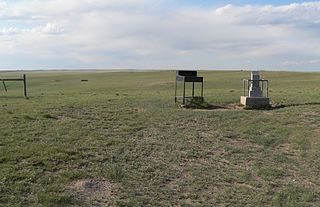
Panorama Point also known as Constable Mountain, is the highest natural point in Nebraska, at an elevation of 5,429 feet (1,655 m) above sea level. It is located in southwestern Kimball County, near the point where Nebraska and Wyoming meet on Colorado's northern boundary. Despite its name and elevation, Panorama Point is not a mountain or a hill; it is merely a low rise on the High Plains. A stone marker, giving the elevation at 5,424 feet (1,653 m), and a guest register are located at the summit of the drive. From the point one can see the nearby state corner marker, and a vast plains landscape with the Rocky Mountains in the western distance. Panorama Point is located on the High Point Bison Ranch, which permits visitors to drive to the site as long as they take care to avoid the ranging bison and pay an entrance fee.

The Missouri History Museum is a history museum located in St. Louis, Missouri in Forest Park showcasing Missouri history. The museum is operated by the Missouri Historical Society, which was founded in 1866. The main galleries of the museum are free through a public subsidy by the Metropolitan Zoological Park and Museum District

Panhandle–Plains Historical Museum is a history museum on the campus of West Texas A&M University in Canyon, Texas, U.S.A., a small city south of Amarillo. The museum's contents are owned and controlled by the Panhandle-Plains Historical Society, while West Texas A&M University and the Texas A&M University Board of Regents maintains and provides the facilities. Panhandle–Plains Historical Museum claims to be the largest history museum in the state of Texas with 70,000 visitors annually and more than three million artifacts.

Thomas Rogers Kimball was an American architect in Omaha, Nebraska. An architect-in-chief of the Trans-Mississippi Exposition in Omaha in 1898, he served as national President of the American Institute of Architects from 1918–1920 and from 1919-1932 served on the Nebraska State Capitol Commission.
Kountze Park is an urban public park located at 1920 Pinkney Street in the Kountze Place neighborhood of North Omaha, Nebraska, in the United States. The Park is historically significant as the site of the Trans-Mississippi Exposition of 1898.

The Great Plains Black History Museum was formerly located at 2213 Lake Street in the Near North Side neighborhood in North Omaha, Nebraska. It was housed in the Webster Telephone Exchange Building, which is listed on the National Register of Historic Places. A nationally renowned institution for more than 30 years, the museum includes more than 100,000 periodicals, manuscripts, photographs and research materials. The museum currently conducts programs and presents exhibits throughout Omaha, the State of Nebraska, regionally and nationally upon request.

The Webster Telephone Exchange Building is located at 2213 Lake Street in North Omaha, Nebraska. It was designed by the well-known Omaha architect Thomas Rogers Kimball. After the Easter Sunday Tornado of 1913, the building was used as the center of recovery operations. In 1933, American Bell donated the building to the Omaha Urban League.

The Oregon Historical Society Museum is a history museum housed at the Oregon Historical Society in downtown Portland, Oregon, United States. The museum was created in 1898 and receives about 44,000 visitors annually.

Florence Mill, also known as the Weber Mill, is a historic mill located at 9102 North 30th Street near the 30th Street exit on I-680 in the Florence community in North Omaha, Nebraska. It was built in 1846 and operated into the 1960s. It was listed on the National Register of Historic Places as Weber Mill in 1998. The mill is also known as the Mormon Mill, Grist Mill, and Old Pink Mill. It is now operated as the Winter Quarters Mill Museum and ArtLoft Gallery.

Leary Site, also known as 25-RH-1 or Leary-Kelly Site is an archaeological site near Rulo, Nebraska and the Big Nemaha River. The site now lies entirely on the reservation of the Iowa Tribe of Kansas and Nebraska. The area was once a village and burial site.
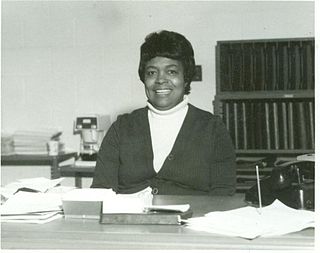
Bertha Calloway was an African-American community activist and historian in North Omaha, Nebraska. The founder of the Negro History Society and the Great Plains Black History Museum, Calloway won awards from several organizations for her activism in the community and Nebraska. "I Love Black History" is the current website for the Bertha W. Calloway Center for the Research and Study of African and African-American History, Art, and Culture.
Asa Thomas Hill, generally known as A. T. Hill, was an American businessman and archaeologist. His work on sites in and around Nebraska, with such collaborators as William Duncan Strong and Waldo Wedel, was instrumental in the development of Great Plains archaeology.
The Washington County Historical Association, or WCHA, is located in the Washington County Historical Museum at 102 North 14th Street in Fort Calhoun, Nebraska. The WCHA "promotes careful guardianship of historical artifacts, promotes an understanding of their significance and inspires people to turn things learned and appreciated into benchmarks for their lives."

The Presbyterian Historical Society (PHS) is the oldest continuous denominational historical society in the United States. Its mission is to collect, preserve and share the history of the American Presbyterian and Reformed tradition with the church and broader community. It is a department of the Office of the General Assembly of the Presbyterian Church (U.S.A.).
The Hastings Museum of Natural and Cultural History is located in Hastings, Nebraska. It claims to be the largest municipal museum between Chicago and Denver. It is housed in a building funded by the Works Progress Administration and dedicated on June 15, 1939. The museum exhibits include Kool-Aid, natural history dioramas, local history, weapons, life of pioneers on the Plains, rocks, minerals, fossils, antique vehicles, coins, and a planetarium.
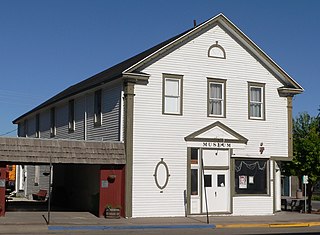
The Fraternal Hall, at 2nd and Chestnut Sts. in Kimball, Nebraska, was built in 1903-04. It includes Classical Revival architecture. It is now operated as Plains Historical Museum.
The Sarpy County Museum is located at 2402 Clay St in Bellevue, Nebraska. The museum holds a collection of artifacts and historical resources, covering the history of Sarpy County, Nebraska, including Bellevue, Gretna, La Vista, Papillion, and Springfield. The museum includes the history of fur traders and missionaries, period rooms, early agricultural pursuits, and a scale mode of Fort Crook, which later became Offutt Air Force Base.

Lincoln, Nebraska is the home of the state capitol of Nebraska, the University of Nebraska and has history dating back to the mid 1800s. A list of tourist attractions that can be found within the city are as follows.
